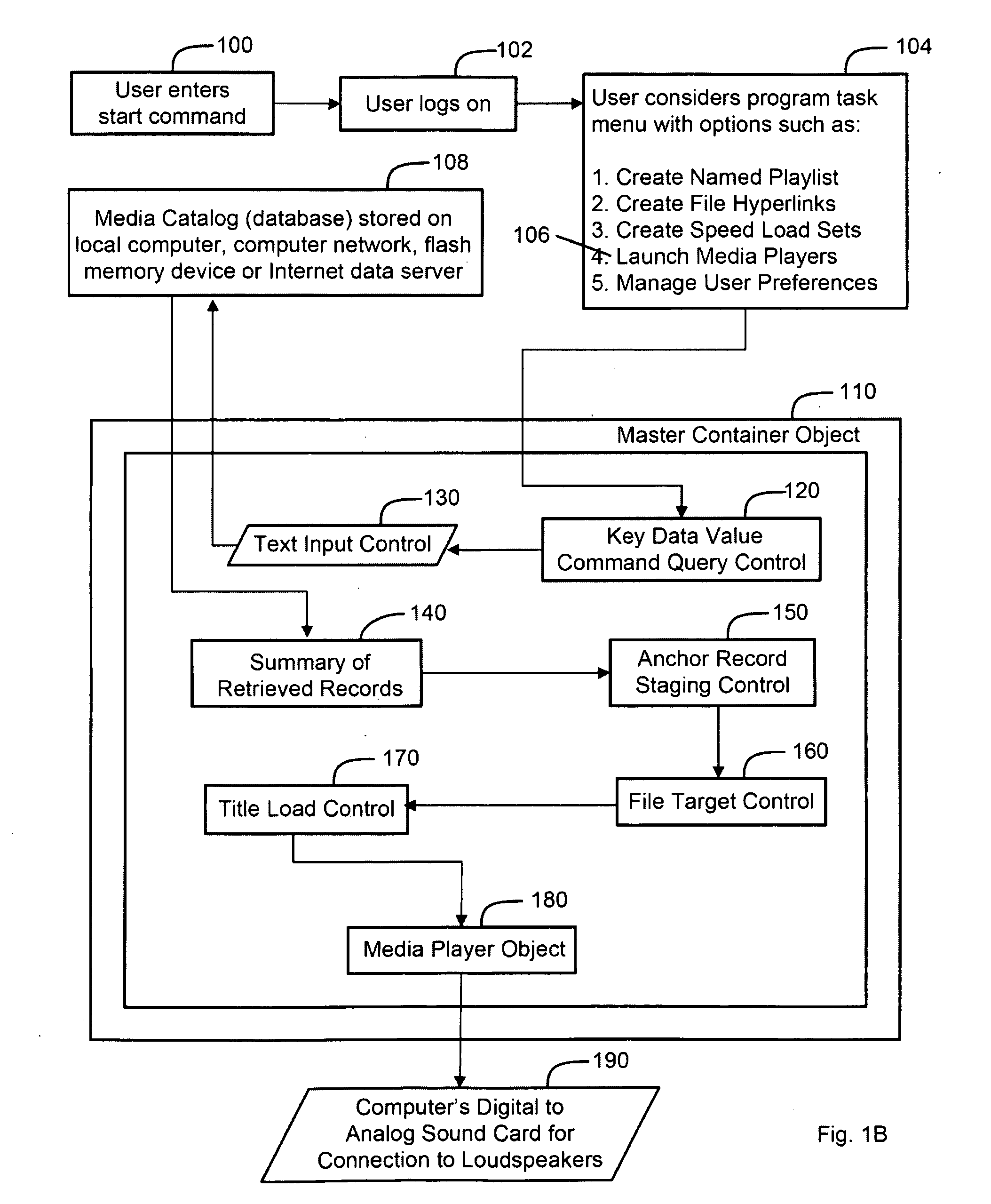Scalable system and method for an integrated digital media catalog, management and reproduction system
a technology of digital media and management, applied in the field of scalable system and method for an integrated digital media catalog, management and reproduction system, can solve the problems of ineffectiveness, inability to change last-second files, and other limitations of the existing art in the world of blended-reproduction audio
- Summary
- Abstract
- Description
- Claims
- Application Information
AI Technical Summary
Benefits of technology
Problems solved by technology
Method used
Image
Examples
Embodiment Construction
[0192]Before beginning an in-depth inspection of flowchart depictions and other drawings, it must be noted that the expression “focus”, as used throughout this specification, represents an important concept, and is informally defined as a programming event or object state that, in simple terms, can be described as a method to specify that a certain program instantiated object is the entity that has been stipulated, at a given moment, as the subject of program attention (as opposed to other program instantiated entities that are not the subject of program attention at that given moment). The concept of focus was not created by this invention, but instead by a program development environment (such as Microsoft® Access) used to construct one embodiment of this invention.
[0193]Why is the concept of focus significant? In the world of a computer programmer, it can be most vital have the ability to inform a program procedure that you want to perform a function or operation on a certain obj...
PUM
 Login to View More
Login to View More Abstract
Description
Claims
Application Information
 Login to View More
Login to View More - R&D
- Intellectual Property
- Life Sciences
- Materials
- Tech Scout
- Unparalleled Data Quality
- Higher Quality Content
- 60% Fewer Hallucinations
Browse by: Latest US Patents, China's latest patents, Technical Efficacy Thesaurus, Application Domain, Technology Topic, Popular Technical Reports.
© 2025 PatSnap. All rights reserved.Legal|Privacy policy|Modern Slavery Act Transparency Statement|Sitemap|About US| Contact US: help@patsnap.com



